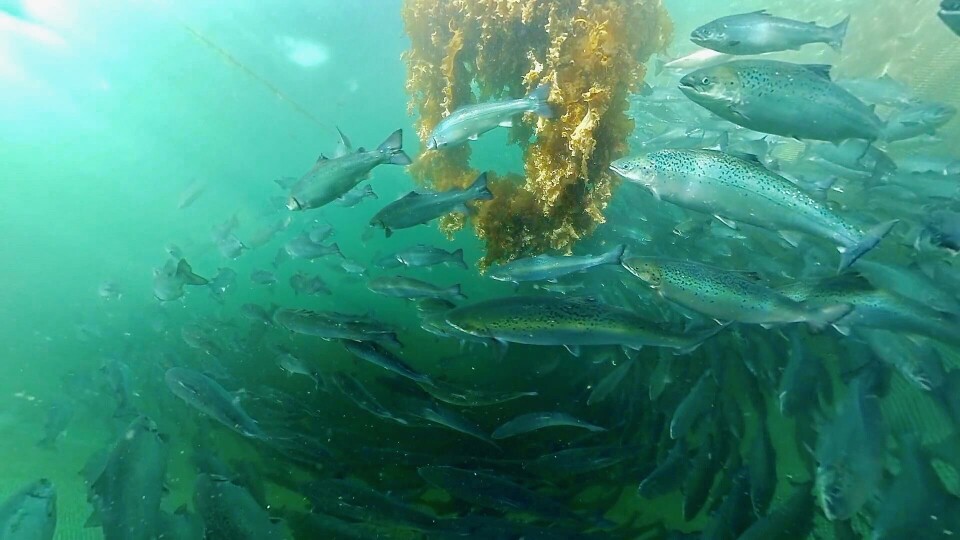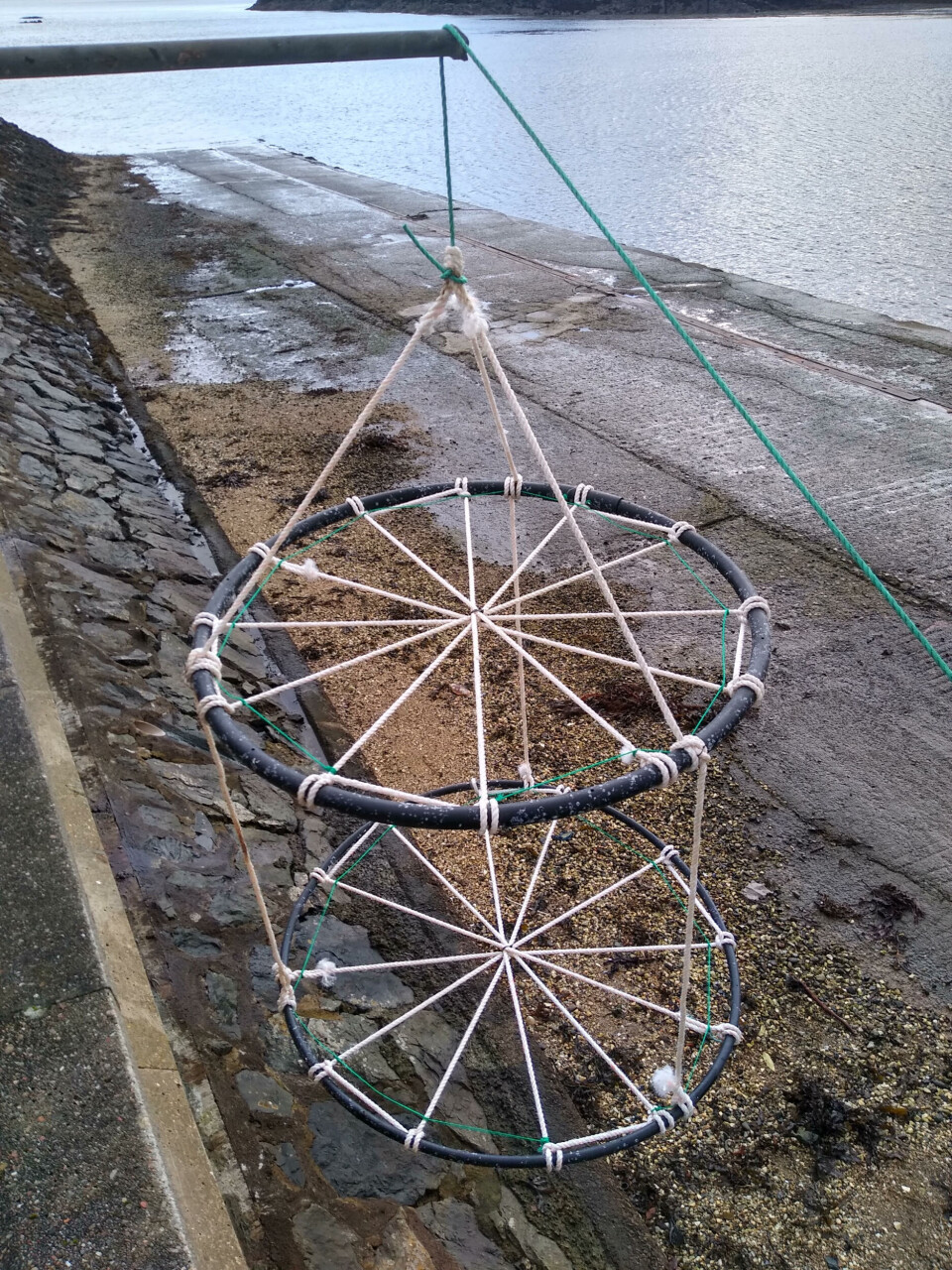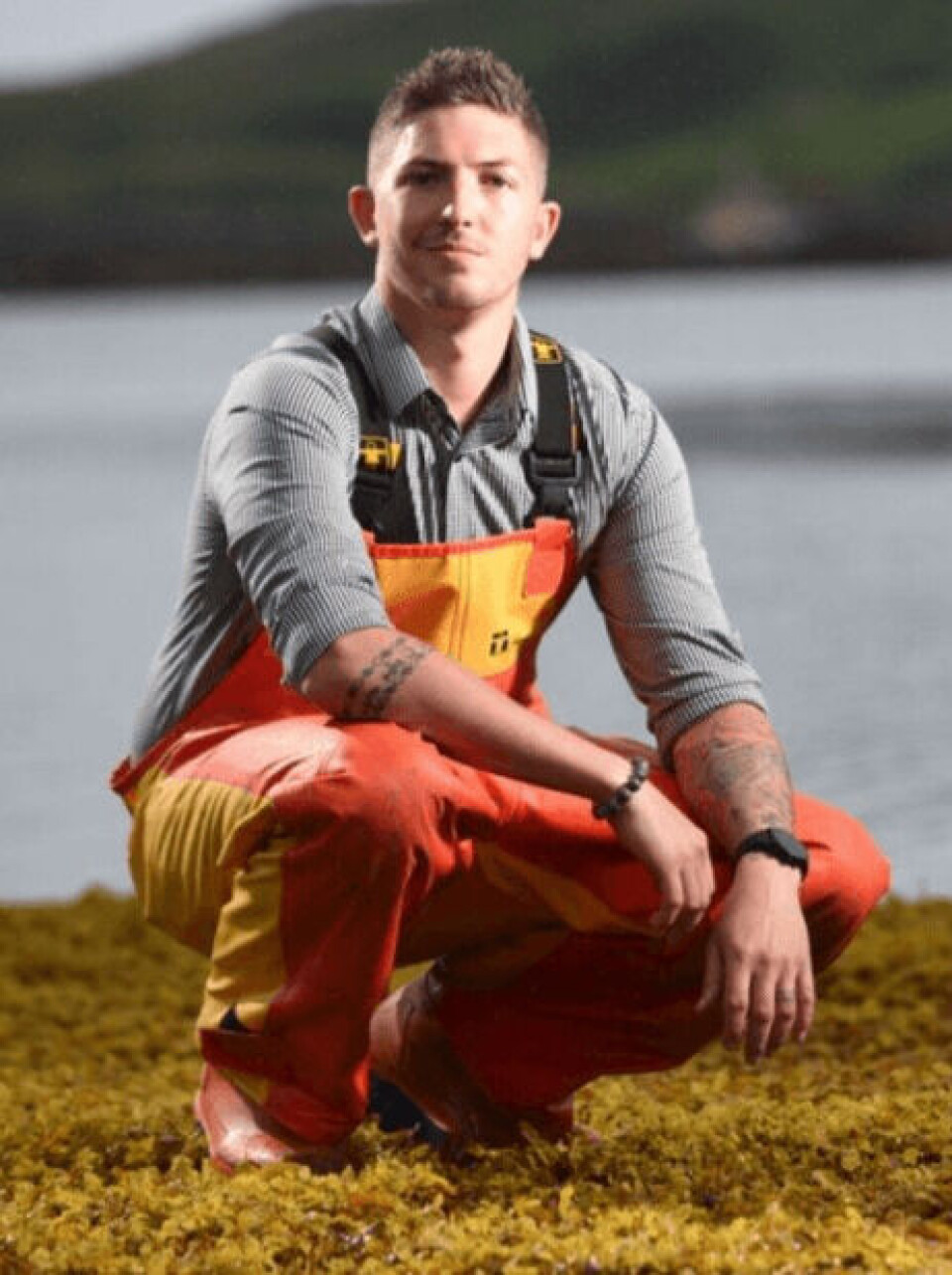
The real deal: can living kelp hides boost cleaner fish?
KelpRing, a company that makes KelpRing live seaweed hides for cleaner fish used in salmon pens, has received a £125,000 funding package from the UK Seafood Innovation Fund to explore potential benefits of its device.
The hides will be installed in pens at a Loch Duart salmon farm in Loch Laxford for 18 months, following feasibility trials with Loch Duart and Scottish Sea Farms last year.
Researchers from Stirling University’s Institute of Aquaculture will evaluate the impact of KelpRing against current standard conditions where artificial kelp is used.
The scientists will assess the preference of the ballan wrasse and lumpfish used as cleaner fish and map behavioural and physiological changes in the cleaner fish population related to their welfare. They will be also looking at cleaner fish efficiency by means of sea lice counts and the health and welfare state of salmon.

Feed pipes
The KelpRing has been created by Martin Welch, whose work as a commercial scallop diver and as a fisherman supplying wild caught wrasse to the salmon farming industry gave him insight into the cleaner fish in their natural habitat and the relationship they have with kelp.
His patented design provides a negatively buoyant platform for seeded kelp ropes. Larger models can be made with redundant salmon farm feed pipes. The KelpRing can be covered with a special net once cleaner fish are inside it and taken either to the side of the cage or outside the cage during fish treatments.
In winter, KelpRings can be lowered towards the base of the pen to provide a safe, natural habitat for wrasse during their dormant period, while other KelpRings can be maintained at a shallower level to support lumpfish which are more active during this period.
Welch said there was evidence natural kelp on salmon farms can have medicinal properties and a calming effect on cleaner fish.
“Cleaner fish are naturally drawn to seaweed forests and by adding kelp hides to salmon pens, it allows the fish to act as they would in the wild, in their natural habitat,” said Welch, who is also one of three founders of KelpCrofting, a small seaweed farming company on Skye.
“Wrasse and lumpfish can live a long and healthy life of up to 25 years if the conditions are right, and measures to enhance their wellbeing can only support their ability to treat sea lice.”
He added: “A lot of the fish’s natural food is within the kelp fronds, wee molluscs, etc, and hard growth will grow on the kelp. I think the wrasse need something hard to chew on to keep their teeth in check.”
Various sizes
The KelpRing can be deployed in various sizes from one to nine metres in diameter, using a mix of naturally seeded and lab-grown kelp. The initial KelpRings installed at Loch Duart will use kelp already available from KelpCrofting’s lab, but Welch is also intending to use kelp from the farm location itself. Spores collected from the site for on growing will be ready for use on KelpRings in a few months.
As well as enhancing cleaner fish wellbeing, using kelp to improve their delousing capabilities could lead to less reliance on expensive current treatment methods for sea lice, such as the use of pharmaceuticals and mechanical delousing.
Crucial to the sector
Sarah Riddle, director of innovation and engagement at the Sustainable Aquaculture Innovation Centre (SAIC), which is supporting the project, said: “Fish health and wellbeing is one of the top priorities for the sector as it continues to target sustainable growth.
“Tools that mimic natural habitats are known to improve the health, welfare, and productivity of cleaner fish. For that reason, it is great to see techniques being trialled to bring the environment of salmon farms closer to what would be found in the wild.
“Aquaculture’s focus on cleaner fish continues to gain momentum, with valuable research developments helping to transform the wider approach to sea lice management. Ballan wrasse and lumpfish are crucial to future-proofing the sector, with collaborative research continuing to find new ways of helping them to thrive.”

Keen to see results
Lewis Bennett, cleaner fish manager at Loch Duart, said he viewed the company’s use of the fish as its biggest innovation.
“Being able to express their natural grazing behaviour requires a range of factors to be met, such as having a habitat or structure in close proximity,” said Bennett.
“We currently use artificial kelp for this but being able to provide our wrasse with a more appropriate habitat should create a happier fish population and would reduce the need for artificial products. I am very keen to see the results on fish behaviour but also the operational benefits of a habitat that doesn’t need cleaning or regular removal from the pen. As we have seen at Loch Duart across a range of factors, a natural option is always superior.”























































